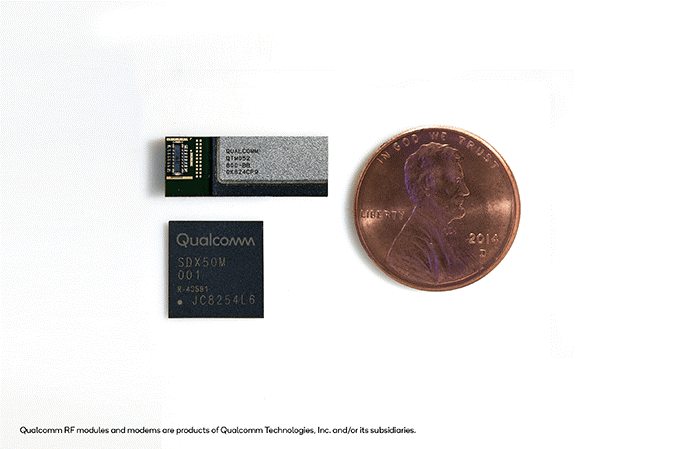The News:
Qualcomm has created a breakthrough for 5G NR with the announcement of a new batch of radio frequency (RF) solutions for both mmWave and sub-6GHz designed for smartphones and other mobile devices. By pairing Qualcomm’s latest RF modules with its Snapdragon X50 modem, the company intends to offer OEMs an incredibly compact end-to-end 5G solution, enabling them to focus on what they do best without worrying about the complexity of the RF system design brought about by 5G, mmWave in particular. In tandem, the solutions will be able to offer 5G coverage in dense urban areas and broad 5G NR coverage.
The Impact:
“As the industry moves to 5G, RF front-end (RFFE) designs and RF component procurement will become far more complex and cumbersome for OEMs to handle. Such compact solutions as these from Qualcomm will no doubt help OEMs accelerate smartphone time-to-market without overly compromising the integrity of the devices’ industrial design, performance or cost,” says Malik Saadi, Vice President of Strategic Technologies at ABI Research.
Why mmWave Module, QTM052 is a big deal:
Qualcomm has created a breakthrough for 5G NR mmWave with the announcement of its QTM052, a new radio frequency (RF) system in the package for smartphones and other mobile devices, which encapsulates all RF components from the antenna to the radio transceiver. This is the first in the industry as, traditionally, OEMs procure RF components from several vendors and handle the design of the overall RF system themselves.
“The mmWave module announced by Qualcomm today is a turning point for 5G implementation within mobile devices as this could potentially set the standard for plug-and-play RF system design for 5G mmWave,” says Malik Saadi, Vice President of Strategic Technologies at ABI Research.
Of most striking significance from the announcement is the speed with which Qualcomm has managed to get to grips with the intricacies and challenges associated with implementing mmWave into a very compact form factor. While many in the mobile industry considered mmWave highly impractical for mobile devices and networks despite the vast bandwidths available, Qualcomm has managed to miniaturize and package its mmWave technology into commercial-ready samples with minimum impact on overall device industrial design. The RF and antenna features of the new mmWave module are vital to mitigate the challenges of the mmWave channel, and the use of up to 4 modules placed around the device can counter many practical problems, such as signal-blocking from the hand of the user covering an antenna.
The mmWave announcement is a breakthrough for smartphone vendors and mobile carriers alike. Companies such as AT&T and Verizon in the US are betting heavily on mmWave being an integral part of 5G rollouts, initially with fixed wireless deployments, which will naturally evolve to the mobile broadband use case. Moreover, the immediate availability of Qualcomm’s modules means that OEMs can set to work creating 5G smartphones, expected to become available as early as 1Q 2019 and mobile hotspots before the end of 2018. By this time, a healthy roster of handset makers, most likely the ‘challenger’ vendors based out of China that have been working closely with Qualcomm, will have devices in market making both 5G mmWave and sub-6GHz a reality far earlier than most industry observers had anticipated. The next phase will be for costs to be brought down and remaining major smartphone OEMs, such as Samsung, Apple, and Huawei, to implement their solutions, which will add significantly to the large-scale commercialization of 5G.
There’s more – Sub-GHz 5G modules, QPM56xx:
The company has also added QPM56xx, a family of sub-6 GHz RF modules, to its 5G product portfolio. These modules could be easily integrated with

Malik Saadi, Vice President of Strategic Technologies at ABI Research
the radio transceiver and could use existing high-band LTE antennas to create a complete RF solution ready to be paired with its Snapdragon X50 5G modem to deliver end-to-end modem-to-antenna solutions across several spectrum bands.
Although other RF suppliers already offer RF modules, this is the first time a more comprehensive solution has been offered to OEMs, bringing several RF elements including PAs, LNAs, and switches into a single package.
“This approach will help OEMs to significantly lessen the complexity of RFFE design for 5G while reducing footprint size, and power consumption of the overall RF system,” says Malik Saadi, Vice President of Strategic Technologies at ABI Research.








